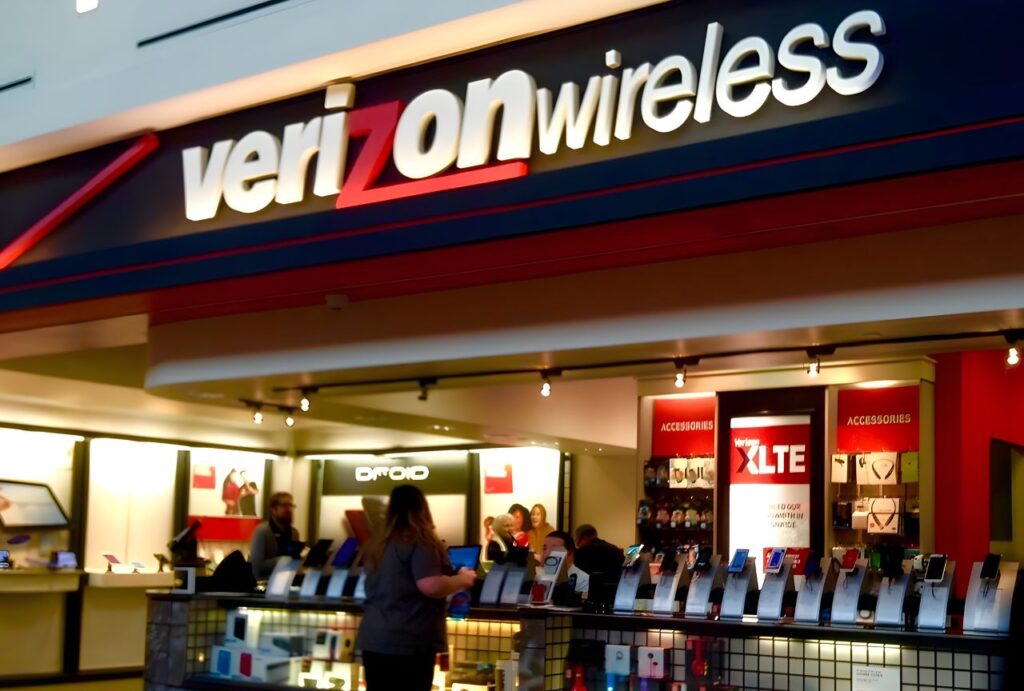Layoffs are no longer concentrated in tech or media, and 2025 is proving that no industry is fully protected from workforce reductions. The latest confirmation comes from the telecommunications sector, where Verizon has announced 15,000 job cuts, marking one of the largest workforce reductions in its history.
This development signals a turning point for an industry that was once viewed as structurally stable due to consistent consumer demand and long-term infrastructure commitments. This article examines what stands behind Verizon’s 15,000-job reduction, how the decision fits within the larger wave of global layoffs, and what this means for the future of the telecommunications sector.
I. Background Context of Verizon Layoffs
Understanding the scale and timing of Verizon’s layoffs requires examining both the company’s internal position and the broader telecom environment in 2025. This context clarifies why a company long viewed as structurally steady is now undergoing one of its largest reductions.
1. Workforce Size and Organizational Structure
- Verizon entered 2025 with an estimated 100,000 employees, making it one of the largest telecom employers in the United States.
- A significant share of its workforce operated across consumer wireless, enterprise services, network operations, retail, and corporate management.
- The decision to cut 15,000 jobs represents around 15 percent of total headcount, a level not seen at the company in more than a decade.

Also Read: 10 Biggest Layoffs Announced So Far in 2025
2. Leadership Transition and Strategic Shifts
- The appointment of Dan Schulman as CEO brought a new cost and efficiency agenda.
- Schulman’s initial statements emphasized operational simplification, margin recovery, and organizational realignment to improve competitiveness.
- Leadership changes often trigger structural reviews, but the speed and scale of this shift indicate significant internal pressure to improve financial performance.
3. Competitive Pressures in the Telecom Market
- Verizon has faced ongoing subscriber losses, particularly in postpaid mobile, a metric that heavily influences revenue projections.
- Competitors such as AT&T and T-Mobile continue to adjust pricing, bundle services, and expand 5G capacity, intensifying market pressure.
- Cable operators offering wireless service packages have increased competitive density, reducing switching costs for consumers.
4. Financial Pressures and Cost Constraints
- The telecom industry is capital-intensive, and Verizon’s spending on spectrum licenses, network upgrades, and nationwide 5G expansion has kept financial obligations high.
- Slower revenue growth and rising operating costs narrowed margins in consecutive quarters.
- Layoffs are part of a wider cost-optimization initiative intended to improve free cash flow and support long-term financial stability.
5. Retail Footprint and Business Model Reassessment
- Verizon has maintained one of the largest corporate retail networks in the sector.
- A strategic push to convert more stores into independently operated locations contributed to labor restructuring.
- This shift reflects a move toward a leaner retail model that reduces fixed labor costs while maintaining market presence.

Also Read: How To Overcome the Fear of Getting Fired From Work
II. Details of the Verizon Layoffs
The announced Verizon layoffs are significant not only in size but also in structure. The company is realigning operations, consolidating roles, and reducing overhead across multiple divisions.
1. Scope and Scale
- 15,000 roles will be eliminated, making it one of the largest single-round layoffs in U.S. telecom history.
- Cuts represent about 15 percent of the total workforce, a major recalibration for an employer of this size.
- This reduction is among the most notable job cuts of 2025 across all industries.
2. Divisions and Roles Affected
- Non-union management positions appear to be disproportionately targeted, with some reports indicating a reduction of more than 20 percent in this category.
- Consumer retail employees are impacted due to the accelerated transition to franchised stores.
- Corporate support functions, administrative layers, and overlapping operational roles are part of the restructuring.
3. Retail Strategy: Shift to Franchised Stores
- Verizon plans to convert approximately 180 to 200 corporate stores into franchise-run locations.
- Staff from company-owned stores may not transition to franchise operators, contributing to higher job losses in retail.
- The strategy aims to reduce long-term labor costs and shift operational risk away from Verizon’s balance sheet.
4. Timeline and Execution
- Layoffs are expected to begin within weeks of the announcement and continue in phases throughout the year.
- The company has indicated that severance packages and transition support will be provided, though exact terms remain limited in public disclosures.
- Internal restructuring teams have been tasked with consolidating departments and reallocating responsibilities.

III. Implications of Verizon Layoffs for Key Stakeholders
1. Impact on Verizon’s Workforce Stability
The Verizon layoffs place substantial pressure on employees across corporate, retail, and managerial layers by signaling a structural shift rather than a short-term adjustment. Cutting 15,000 roles reduces long-established internal pathways and narrows upward mobility for the remaining workforce. Employees now face a more compressed organizational hierarchy, tighter job competition, and increased performance expectations as Verizon prioritizes cost efficiency and operational speed. This shift also challenges workers whose roles were tied to functions that the company is actively reducing, including certain administrative and retail positions.
2. Implications for Verizon’s Operational Model
The layoffs accelerate Verizon’s move toward a leaner operating structure with fewer management layers and more reliance on automation, digital service channels, and external partners. Consolidating roles and transitioning hundreds of corporate stores to franchise operators allows the company to reduce long-term labor commitments while redirecting resources toward areas tied to network performance and revenue protection. This restructuring reduces operational rigidity and aligns Verizon with competitive market conditions that require lower overhead and faster strategic execution.
3. Competitive Consequences Across the Telecom Industry
The scale of the Verizon layoffs is prompting renewed scrutiny across the telecom sector as competitors assess whether similar structural changes are unavoidable. Telecom firms have faced slowing subscriber growth and rising costs linked to network upgrades, creating conditions where efficiency gains become central to strategy. Verizon’s move intensifies pressure on AT&T, T-Mobile, and cable operators expanding into mobile to evaluate staffing, retail footprints, and corporate structures. The layoffs mark a clear shift toward a more aggressive efficiency-driven landscape where legacy cost structures carry higher risk.
4. Investor Expectations and Market Interpretation
Financial markets view the Verizon layoffs as a signal that management is taking decisive action to address declining margins and operational inefficiencies. Short-term sentiment tends to improve when companies commit to large cost reductions, but investors will monitor whether the restructuring delivers measurable gains in subscriber retention, service quality, and free cash flow. If the layoffs fail to reverse customer losses or enhance competitive performance, market confidence could weaken. The long-term outcome depends on whether the cost savings are paired with a sustainable strategy that strengthens Verizon’s position in an increasingly price-sensitive market.
5. Broader Economic and Labor Market Impact
The Verizon layoffs add a significant volume of displaced workers to an already tight labor market characterized by rising layoffs in multiple sectors. Thousands of skilled employees entering the job market at once can affect wage dynamics, hiring strategies, and regional employment conditions, particularly in cities where Verizon has major corporate and retail operations. The announcement also reinforces the trend of large U.S. employers reassessing workforce size in response to higher operating costs, slower consumer demand, and intense competition. Verizon’s restructuring signals that telecom, once viewed as a safeguarded sector, is now subject to the same labor realignments affecting the broader economy.
The Verizon layoffs highlight a labor environment where cost efficiency is taking priority across multiple sectors, raising questions about how far workforce reductions will extend as companies adjust to slower growth and higher operational pressure. The next phase will reveal whether restructuring becomes a long-term strategy rather than a temporary response, and how continued cuts across large employers will influence wage trends, consumer spending, and overall economic stability.



